Small Yard, Big Impact: Landscaping Ideas for Limited Spaces
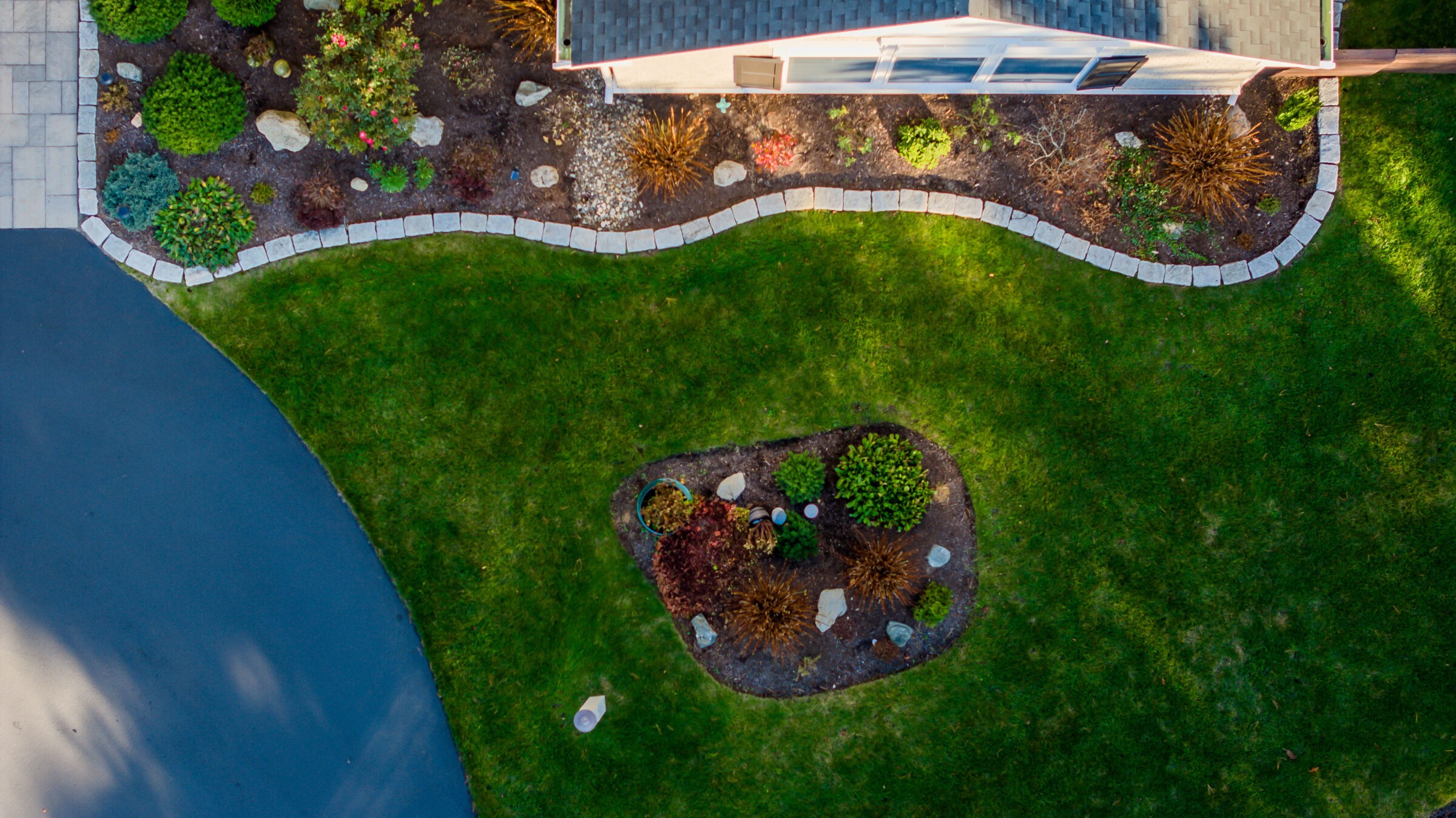
Every home deserves an outdoor space that feels welcoming, no matter its size. If you live in Wareham, Plymouth, Cape Cod or anywhere along the South Shore, you know the challenge of narrow side yards or compact lawns. You might look at your small backyard and worry there isn’t enough room for anything beyond a grill and a couple of chairs. The thought of children growing up without a place to play or a front yard with no space for plants can be disheartening. Those feelings can grow when you compare your modest yard to the sprawling lawns you see in magazines.
The good news is that small yards have unique potential when you approach them with creativity. By reimagining how you use your space, like introducing vertical gardens, container plantings, optical tricks, and carefully chosen plants, you can turn limitations into opportunities. Multi‑purpose features like benches with built‑in planters or a winding path that invites exploration help make even tiny yards feel generous.
This blog is your guide to those solutions, offering examples from Wareham, Plymouth and Cape Cod and practical steps you can apply right away.
How Can You Make the Most of Small Front Yard Landscaping?

Your front yard is the first impression visitors get of your home, so even a small space deserves thoughtful design. Start by defining clear pathways. Gentle curves draw the eye through the space, making a yard appear longer than it is. Instead of a straight sidewalk running from street to door, consider a winding flagstone path that leaves room for plant beds on either side.
An inviting entry often relies on balance. Use low shrubs or ornamental grasses to frame the front door without blocking windows. For homes near Cape Cod, salt‑tolerant plants like Bayberry or Switchgrass can handle coastal winds. Incorporating evergreens ensures year‑round structure, while seasonal flowers provide splashes of color. Keep plant heights proportionate so they don’t overwhelm the architecture.
Quick tips for small front yards:
- Frame the entry: Place symmetrical planters or stone urns on either side of the walkway. The repetition naturally guides visitors toward the door.
- Keep it open: Opt for a low picket fence or simple hedge; tall fences can make a small yard feel enclosed.
- Introduce texture: Mix groundcovers like creeping thyme with larger leaf plants for visual interest.
- Light the way: Add path lighting or low solar lights. Proper lighting adds safety and highlights your design.
For more creative ideas, see our full guide on landscaping ideas for transforming your yard.
What Small Garden Ideas Work Well in Wareham, Plymouth & Cape Cod?
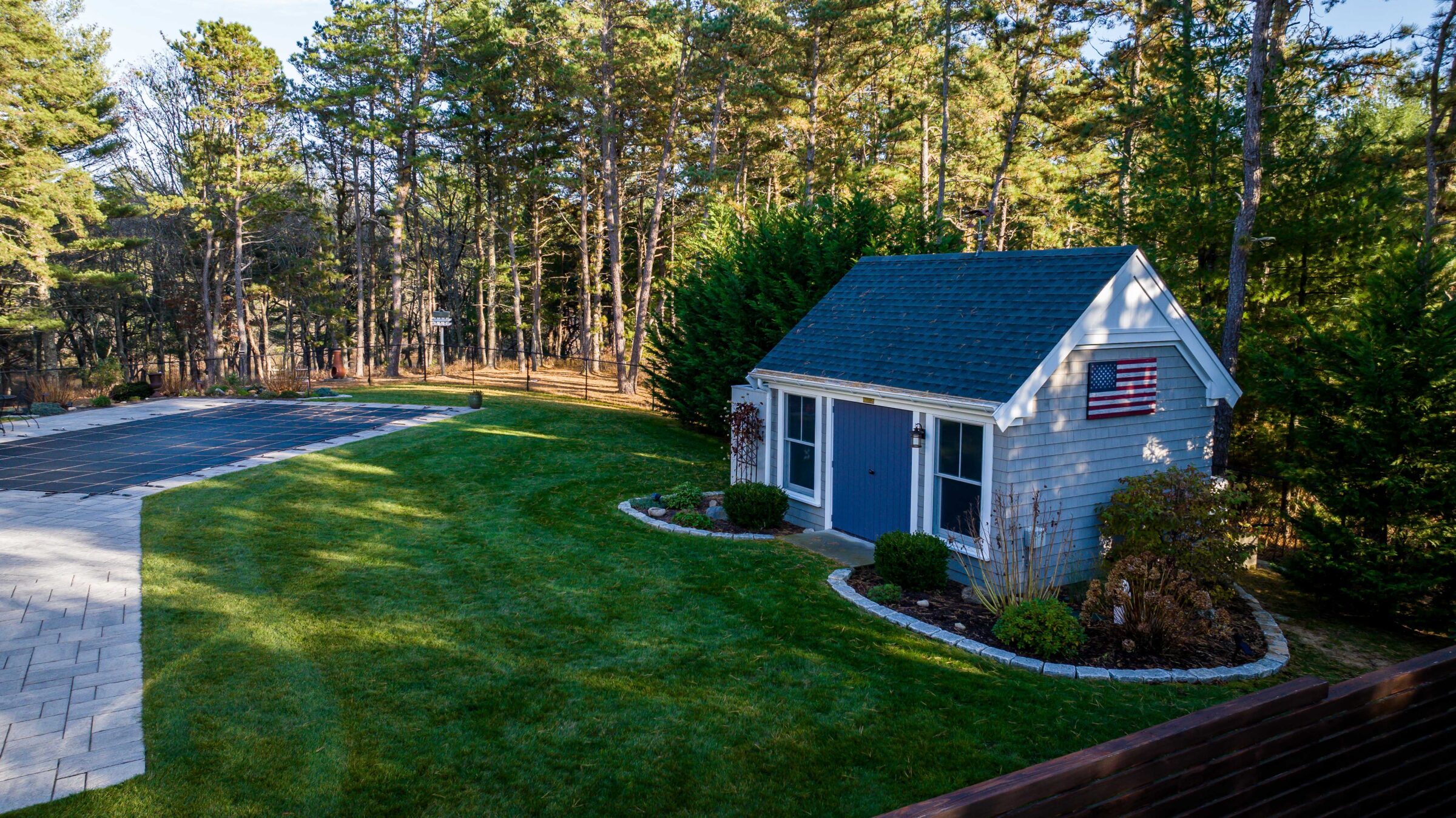
Small gardens thrive when they reflect their owners, but planning them can feel overwhelming. Even a tiny yard or patio can support flowers, herbs and vegetables with thoughtful planning. Along the South Shore, sandy soil and salty breezes present unique challenges; the ideas below are tailored to places like Wareham, Plymouth and Cape Cod.
Raised Beds & Vertical Supports
Raised beds and trellises let you grow upward instead of outward. They create deep, well‑drained soil and offer privacy; adding beans, cucumbers or vines to vertical supports frees floor space while adding height.
They improve soil control and drainage, make planting easier, and add vertical layers that bring structure and privacy.
Use durable materials like cedar or powder‑coated metal; clematis, honeysuckle and thyme thrive on trellises.
Container Gardens
Container gardens suit small spaces and allow you to move plants as light and weather change. Use pots with drainage and a quality mix; combine ornamental flowers, herbs and compact vegetables; and try hanging or tiered planters to bring greenery up. Move pots to sun or shade as needed, making containers ideal for variable climates.
Plants That Thrive in Wareham & Plymouth
A successful small garden depends on plants that suit your microclimate. Salt‑tolerant choices like rugosa rose or Russian sage thrive in sunny, sandy spots, while ferns and hostas fill shady corners. To enjoy fresh produce, try strawberries, blueberries, or dwarf fruit trees. Always match your selections to the light and soil in your yard. Sun‑loving plants will struggle in deep shade.
Choose salt‑tolerant plants like rugosa rose, Russian sage, and blue fescue for sunny, sandy spots; shade lovers such as native ferns, hostas, and astilbe for under trees; and edible plants like strawberries, blueberries and dwarf fruit trees for both beauty and harvests. Always match plants to the available sunlight and soil conditions.
Which Landscaping Ideas for Small Spaces Create a Sense of Space?
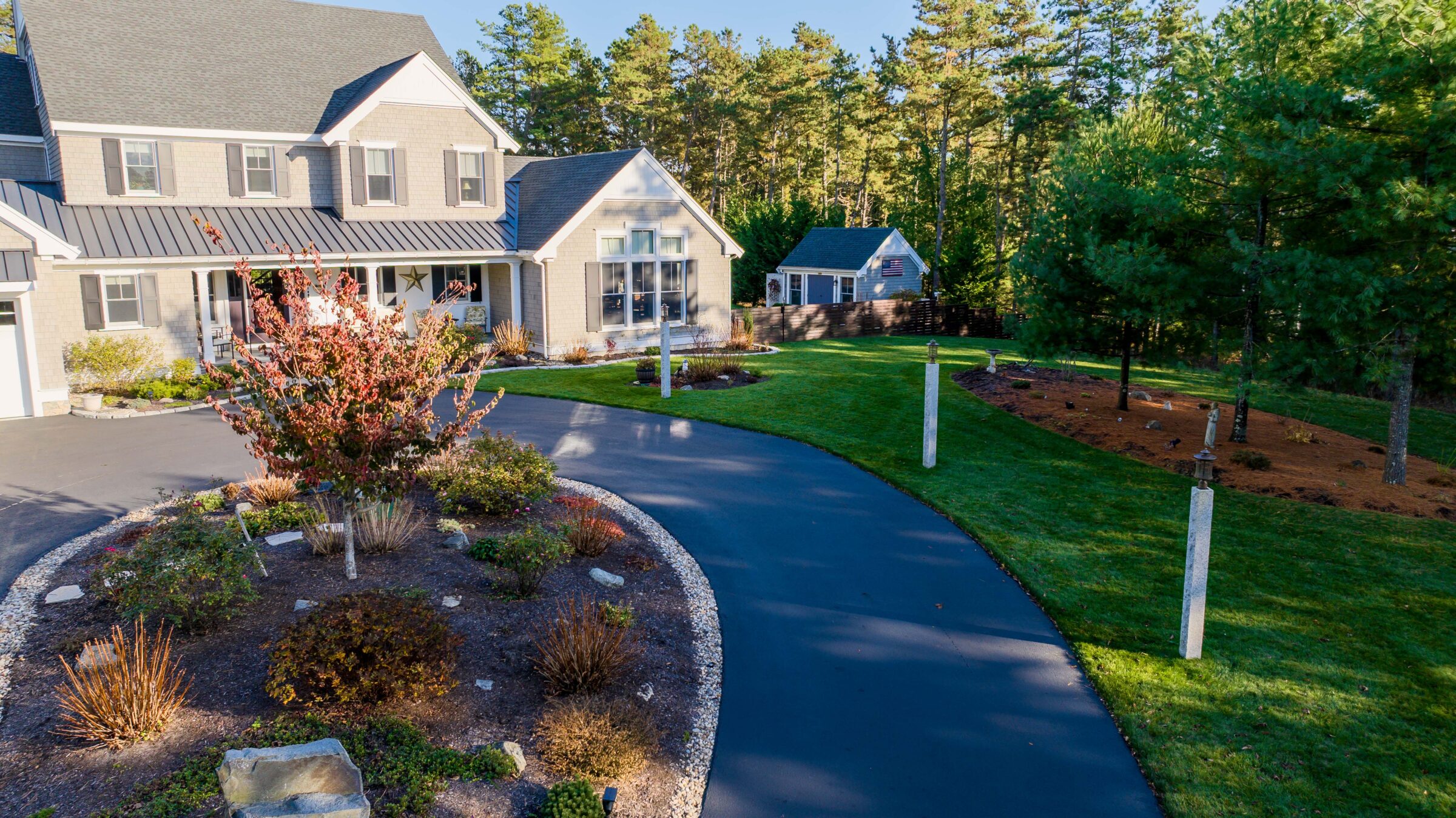
One of the most powerful tools in small yard design is perspective. Paths and borders that curve gently take the eye on a longer journey, making the garden feel larger. In contrast, straight lines show the limited size immediately. By incorporating meandering paths made of gravel or stepping stones, you encourage exploration and hide the garden’s true boundaries.
Optical illusion techniques you can apply:
- Use vertical lines: Tall, slender plants or upright fencing draw the eye upward, making the space feel taller. Plant columnar conifers or ornamental grasses near the back of the yard, and train vines up trellises or wire supports.
- Play with color: Cool hues like blues, purples and pale greens recede into the background, while warm colors such as reds, oranges and yellows seem closer. Place cooler colored plants at the back of your beds and warm colored ones in the foreground to add depth.
- Vary texture: Plants with fine, delicate foliage appear further away, while bold leaves look closer. Combine small‑leafed ferns with large‑leafed hostas to create layers.
- Add mirrors or reflective surfaces: Strategically placed mirrors can reflect light and greenery, making a yard appear deeper. Make sure mirrors reflect open areas rather than walls to avoid showing the garden’s boundaries.
- Zone the space: Divide the yard into different “rooms” using low hedges, different paving, or subtle level changes.
- Soften boundaries: Hide fences or walls behind tall, bushy plants. The blending of edges tricks the eye into thinking your garden extends farther.
Lighting also plays a key role. Illuminating trees or architectural features toward the back of your yard draws attention outward, especially in the evening. Choose small, lightweight furniture with clean lines to avoid overcrowding and keep your garden tidy. Focal points such as sculptures or water features, placed along curved paths, lead the eye and add interest. These simple design tricks help a small yard feel open and inviting.
How Can Vertical & Container Gardens Improve Small Yards?
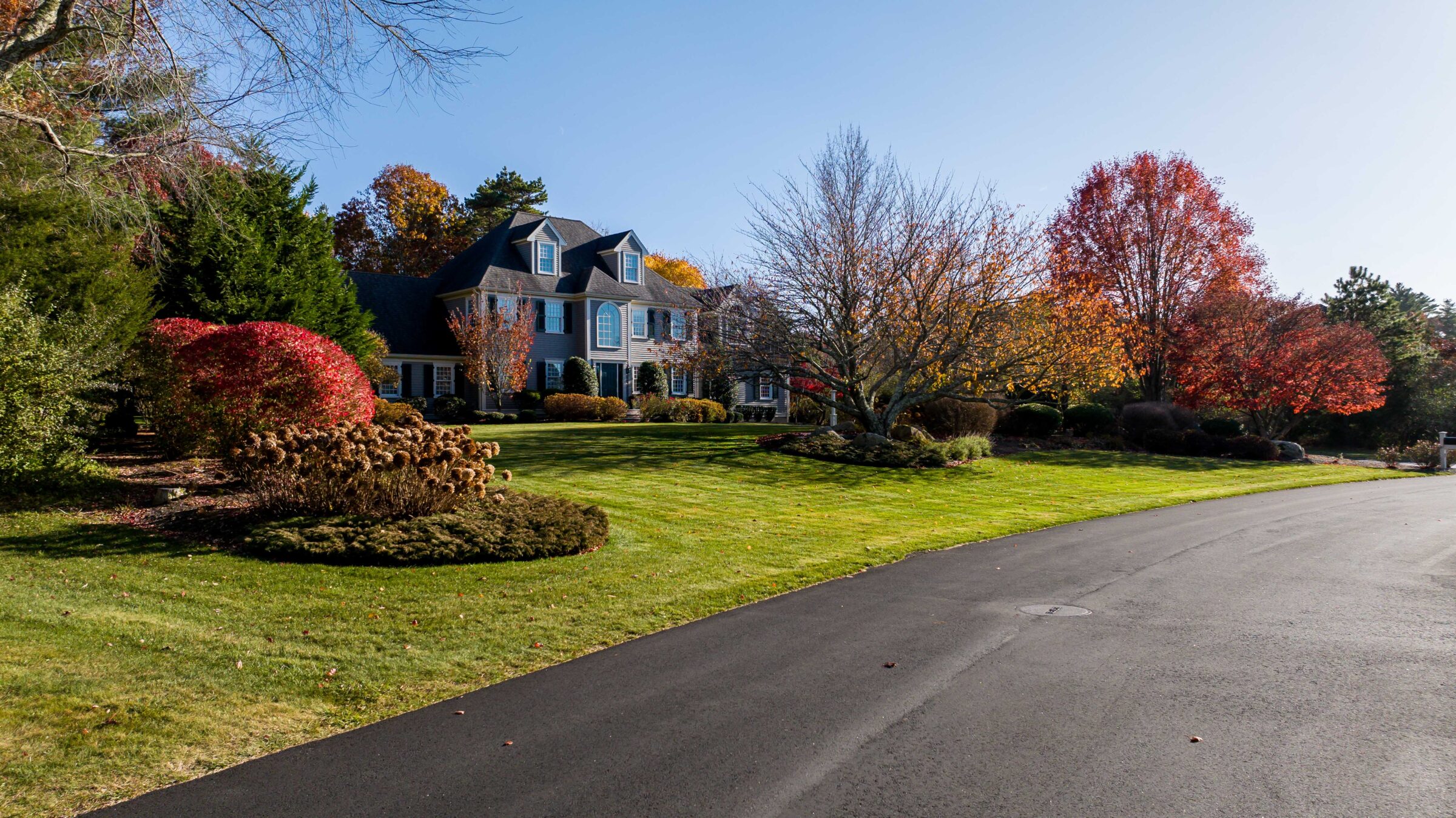
Growing upward is a smart way to add life to a yard without sacrificing space. Vertical gardens and green walls turn fences or exterior walls into living canvases. They can also act as privacy screens in densely built neighborhoods. When planning a vertical garden, choose structures like wall‑mounted planters or custom frames that complement your home and can withstand your local climate. Selecting a mix of plants like vibrant flowers, aromatic herbs, and hardy succulents, adds color and function. Arrange them in patterns or themes to express your style.
Container gardening offers flexibility and portability. Proper drainage is essential: containers need holes and a quality potting mix to prevent waterlogged roots. Because containers isolate plants from native soil, you can grow species that might not thrive otherwise. For example, Mediterranean herbs such as rosemary or lavender prefer sandy, well‑drained soil; a container lets you tailor conditions even if your yard has heavy clay. Mixing plants of different heights, colors, and textures gives your container garden a lush, layered look. Hanging baskets and wall‑mounted planters allow you to bring greenery to eye level, while larger pots placed on patios or decks create visual anchors.
Replacing a deck with a raised vegetable garden and vertical bean poles can provide fresh produce and vertical interest. Similarly, you can repurpose old ladders, pallets, or trellises to support climbing beans, cucumbers or vining flowers. These vertical elements not only maximize growing area but also add structure, leading the eye upward. Combined with the optical tricks discussed earlier, vertical and container gardens can transform even the smallest backyard into an oasis.
What Plants Suit the Scale of smaller Yards?
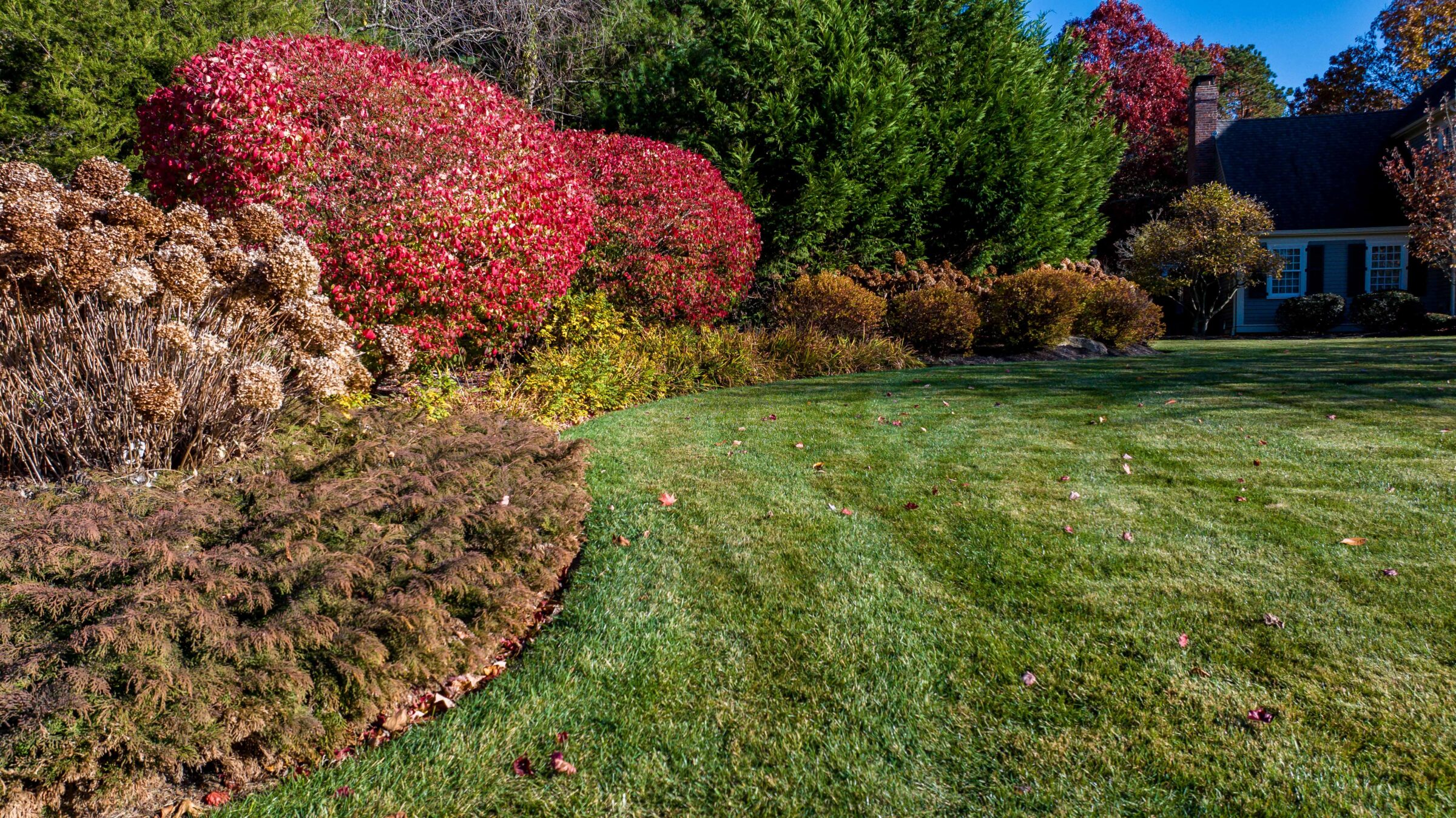
Selecting the right plants is essential when space is limited. Plants that grow too large will crowd your yard and require heavy pruning. Instead, choose compact or dwarf varieties that fit comfortably in small beds and containers. For New England gardens, pair several regionally suited plant like Maple paired with Hosta, Rhododendron with ferns, Lilac with Astilbe, Birch with Columbine, and Blueberry with Daylily. These combinations offer hardy, low‑maintenance beauty across seasons and provide scale appropriate for modest yards.
When designing borders, layer plants by height. Tall plants go at the back or center, medium plants in the middle, and low groundcovers at the front. Use dwarf shrubs like Little Lime Hydrangea or Boxwood ‘Green Gem’ to structure the space. For small trees, consider Japanese Maple cultivars or Serviceberry, which offer seasonal interest without overwhelming the landscape. Ornamental grasses such as Little Bluestem add texture and movement.
Tips for choosing plants:
- Consider mature size: Always check a plant’s expected height and width before planting. Dwarf varieties save space and maintenance.
- Use natives where possible: Native plants are adapted to local conditions and support regional wildlife. Butterfly Weed, New England Aster, and Switchgrass thrive in our climate.
- Mix evergreen and deciduous: Evergreens provide structure in winter, while deciduous plants bring seasonal color.
- Play with form and texture: Combine mounding plants with upright forms and fine foliage with bold leaves to create contrast.
- Think about bloom times: Stagger flowering plants so there’s always something in bloom from spring through fall.
You can also introduce edible plants into ornamental beds. Blueberries, strawberries, and dwarf fruit trees provide beauty and a harvest. Herbs like sage, thyme, and chives make attractive borders and offer culinary rewards. With careful selection, your tiny garden can be both visually appealing and productive.
Why Include Multi‑Purpose Features in a Compact Yard?
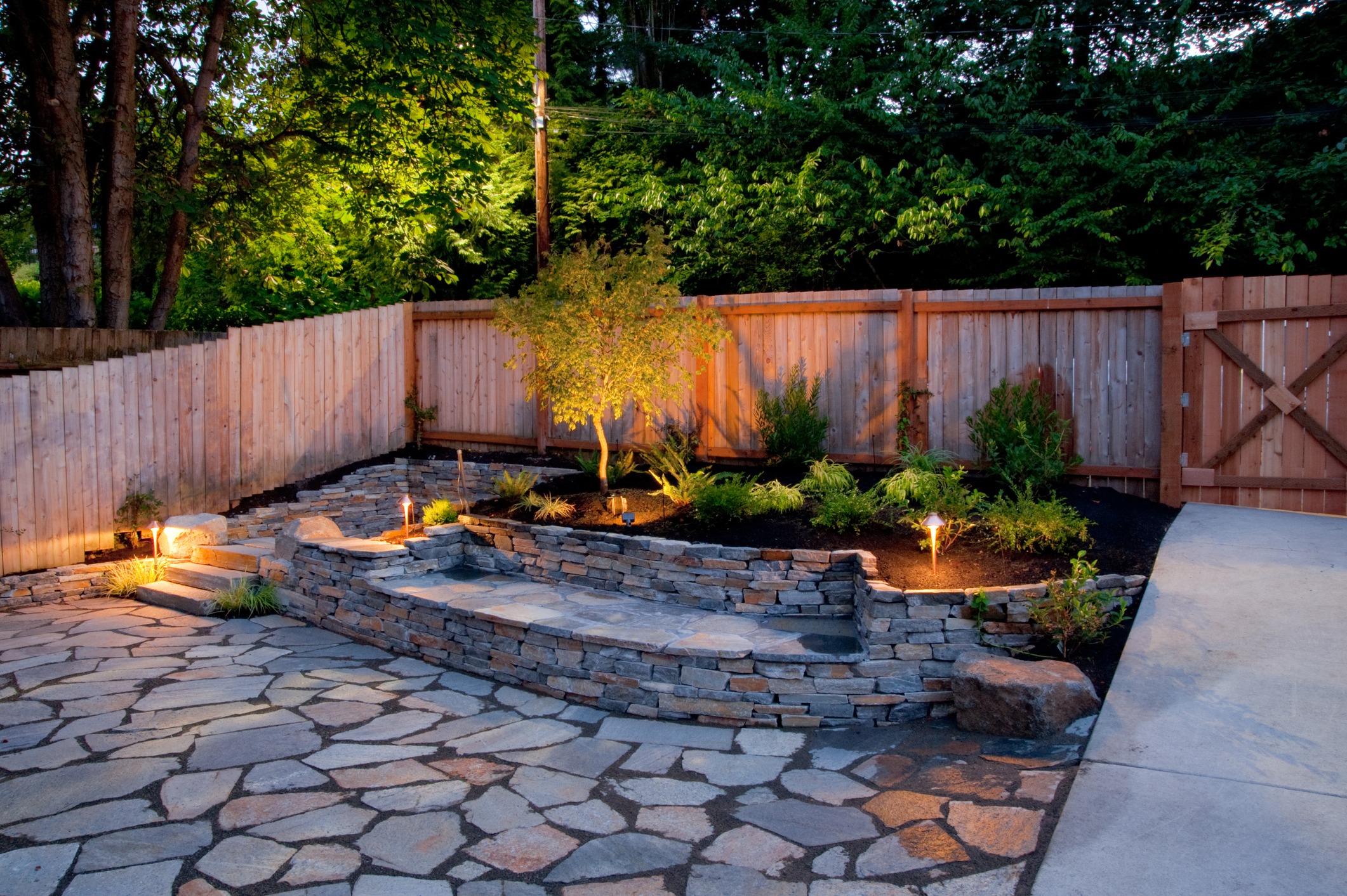
Even the smallest yard can feel spacious if every feature works harder for you. By choosing items that serve more than one role, you gain comfort, storage, and beauty without overcrowding your outdoor space. These smart solutions make it easier to enjoy your yard without constant adjustments.
Built-In Seating & Storage
A bench with storage or planters lets you sit comfortably while keeping tools or cushions out of sight. These pieces combine comfort and practicality without adding clutter.
Furniture That Adapts
Tables with removable trays can serve as both dining areas and potting benches. Foldable chairs or ottomans with storage make entertaining easier while saving space.
Structures With Dual Roles
Retaining walls can double as raised beds for herbs, while decorative containers can act as small ponds or water features. These choices keep your yard functional and attractive.
By blending seating, storage, and adaptable furniture, your yard feels uncluttered and efficient. The result is a space where you can relax, garden, and entertain without constant rearranging.
Why Trust Landscapes by D&J for Your Small Backyard Landscaping Ideas?
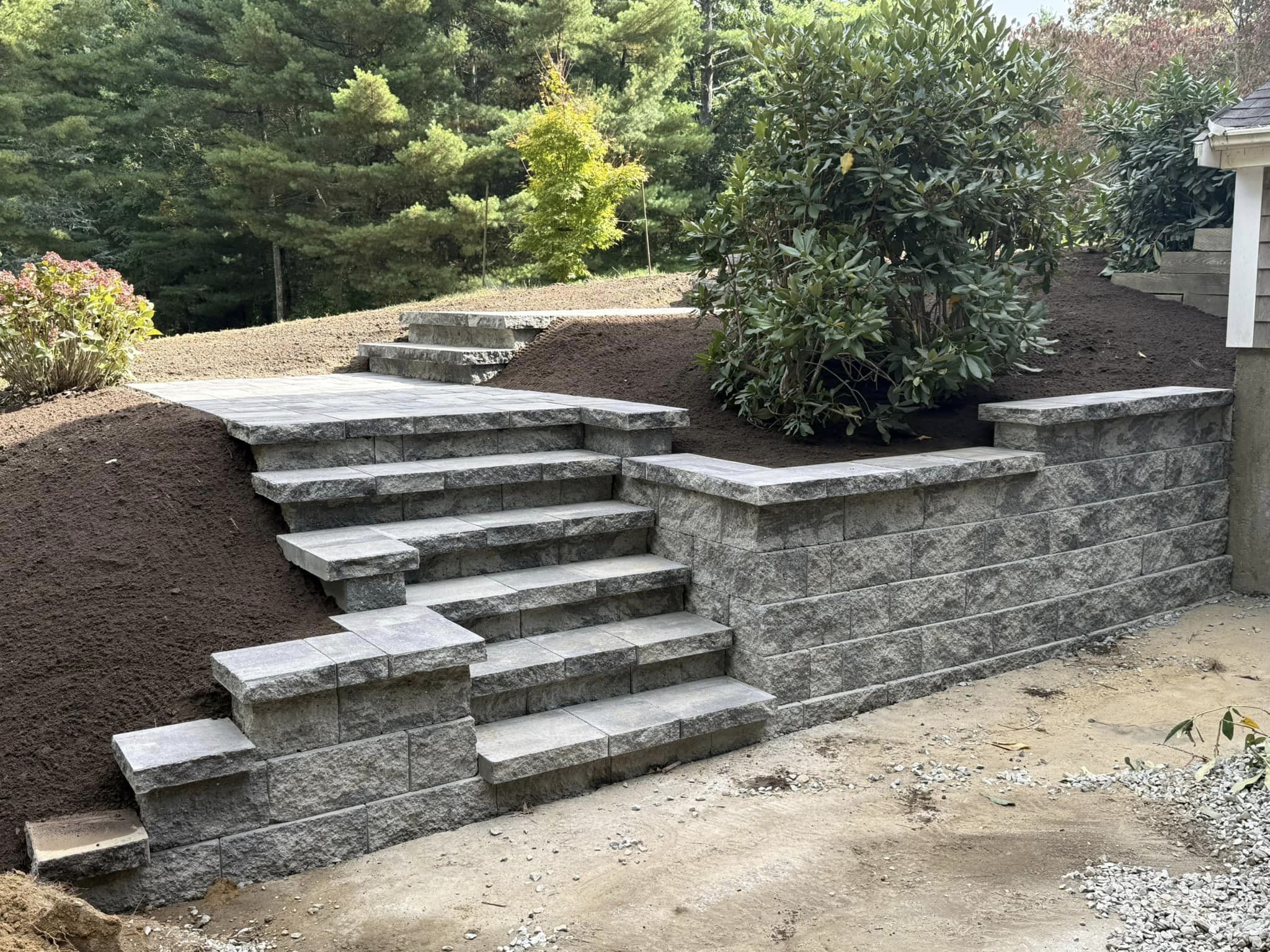
Landscapes by D&J have been serving homeowners across Wareham, Plymouth, Cape Cod, and surrounding towns for years. Our success comes from an honest, professional, and dependable approach to every project. When you have a small backyard, cookie-cutter solutions rarely work. That’s why we take a consultative approach: listening to your goals, assessing your property, and tailoring a plan that reflects your lifestyle and budget. With fixed price construction and maintenance, you know the cost up front, and there are no surprises.
Another advantage of working with Landscapes by D&J is the quality of our equipment. All of our tools and machines are near new, which means projects are completed efficiently with minimal disruption to your property. We take pride in professionalism, from the first site visit to the final clean-up. Having been raised by hard-working families ourselves, we understand the importance of stretching every dollar, and we work diligently to deliver value without cutting corners. Every project, no matter how small, receives our full attention because we know your home is one of your most important investments.
When you’re ready to put small backyard landscaping ideas into action, Landscapes by D&J is here to help. Our experience across suburban New England, combined with a commitment to fairness and reliability, makes us a partner you can trust. Request a quote today and let our team guide you from vision to completion.
Summary
This article explored small backyard landscaping ideas for homeowners in Wareham, Plymouth, Cape Cod, and similar New England communities. We discussed ways to design welcoming front yards, create raised beds and vertical gardens, and use optical tricks like curving paths and vertical lines. Tips for choosing plants suited to compact spaces included regionally appropriate pairings such as Maple with Hosta and Blueberry with Daylily. We covered container gardening essentials like proper drainage, potting mix, and creative arrangement. Multi‑purpose furniture and containers maximize limited space. Finally, we highlighted how Landscapes by D&J’s consultative approach and fixed pricing deliver dependable results. Contact them to make the most of your small yard.
Tags:
